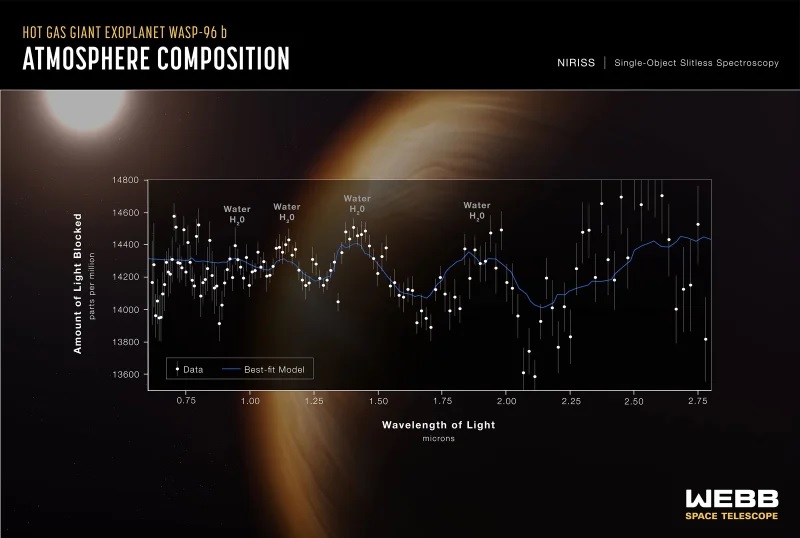NASA Releases First Batch of Images Captured By James Webb Space Telescope
For the greater part of the last 26 years, NASA scientists working on the James Webb Space Telescope have pleaded for three things: tolerance, time, and, in no little part, money.

The idea for a next-generation space telescope to look 13.6 billion light years away was first put forth in 1996 by a group of astronomers working with the space agency.
This telescope would be able to detect infrared light that has been making its way to Earth since only 200 million years after the Big Bang. They said that the telescope would be prepared for launch by 2007 and would cost only $500 million—a modest sum by current standards.
That’s not how it turned out. The launch that was anticipated for 2007 didn’t occur until Christmas Day 2021, and what about that $500 million price tag? It eventually reached $10 billion. However, the astronomers’ assurance that the new telescope would provide amazing photographs remained unchanged.
That promise was fulfilled this morning. At a press conference held at the Goddard Space Flight Center in Greenbelt, Maryland, NASA released four new photographs taken by Webb that, by any standard, are absolutely stunning. The photos include nebulae, galaxy clusters, and a massive, previously unseen exoplanet.
Yesterday’s White House press conference featured NASA Administrator Bill Nelson revealing a stunning image of a galactic cluster known as SMACS 0723, which contains thousands of galaxies, including some of the most distant ones ever seen in the infrared spectrum. President Joe Biden and Vice President Kamala Harris were also present.
“These images are going to remind the world that America is capable of great things,” Biden said. “There is nothing beyond our possibilities.” The Webb telescope, he added, “symbolizes the relentless spirit of American ingenuity.”
The image released yesterday and the other four images NASA is releasing today are of things that, up until now, most non-astronomers were unaware of but that will now secure a new position in cosmic history. In addition to SMACS 0723, there are:
- The Carina Nebula, one of the largest and brightest nebulae in the sky, located 7,600 light years from Earth.
- WASP-96b, a giant gas planet orbiting a star 1,150 light years from Earth.
- The Southern Ring Nebula, an expanding cloud of gas nearly half a light year wide surrounding a dying star 2,000 light years away.
- Stephan’s Quintet, a compact galaxy group, located 290 million light years from Earth, first crudely imaged in 1787.




The five targets were selected by the Webb scientists as a sampling of the types of objects the telescope would be able to see throughout time. The Carina Nebula serves as a stellar nursery where millions of stars are being created, while SMACS 0723 is a test of deep field imaging.
However, the exoplanet WASP-96b, which was the telescope’s tiniest object to date, will probably generate the most enthusiasm. Exoplanets, or planets orbiting other stars, have only recently been discovered using one of two methods: the transit method, in which astronomers look for a slight dimming of the parent star’s light as an orbiting planet passes in front of it, or the radial velocity method, in which they search for a slight wobble in the star’s position caused by the gravitational pull of the orbiting planet.

Both a time machine and an observatory, Webb serves both purposes. Since pictures from faraway objects take a very long time to reach us, even when travelling at the speed of light, the further into space a telescope can see, the farther back in time it is gazing. The image of a galaxy that is 13.6 billion light years away that we view is not an image of the galaxy as it appears right now, but rather as it was 13.6 billion years ago, at the beginning of the universe.

While the paltry 200 million light-year advantage the Webb gives may not seem like much, it is actually enormous compared to the 13.4 billion light-year maximum that the Hubble space telescope can observe. There was a lot that occurred over that specific 200 million years, but telescopes were oblivious to it until recently.
The research that Webb will do in the future is for later, and astronomers from all around the globe are already scrambling to reserve time on the Webb to investigate objects of interest in the years to come. Simply said, today is about the glitz. The size and beauty of the cosmos may astound. More than any other observatory before it, Webb is bringing all of that into the open.
